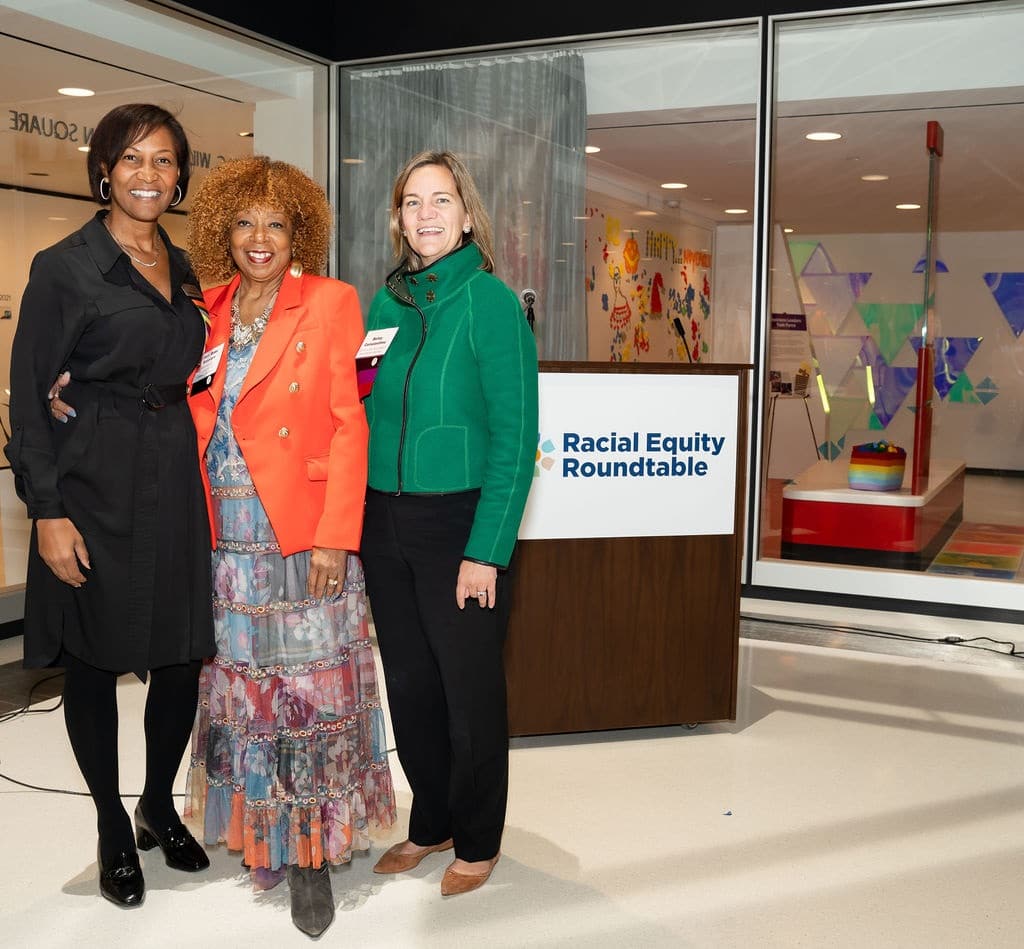Meet Felicia Beard: Changing the Narrative to Open Hearts & Minds

Pictured here, from left: Felicia Beard, Associate Vice President, Racial Equity Initiatives at the Community Foundation; Justice Rose H. Sconiers, Chair of the Racial Equity Roundtable; and Betsy Constantine, President/CEO of the Community Foundation.
For generations, people have been told what other communities and populations were like, without having any lived, first-hand experience with those populations. Those teachings have often unfairly shaped negative perceptions of people of color and is something the Racial Equity Roundtable’s Narrative Change workgroup is working to change.
“Narrative change is about telling the accurate, authentic and just narrative about communities of color. The Roundtable’s Narrative Change Strategy builds the capacity of our community to understand racial equity and change the way we think about people of color through an educational and transformative process,” said Felicia Beard, Associate Vice President of Racial Equity Initiatives at the Community Foundation and interim Chair of the Narrative Change workgroup.
For example, the Racial Equity Impact Analysis Tool Training, a narrative change strategy offered by the Roundtable, provides a learning opportunity which negates the myth that everyone can pull themselves up by their bootstraps. This training focuses on educating decision makers on intentional policies, such as FHA lending practices and redlining which have oppressed communities of color. Although Narrative Change is its own workgroup, Felicia noted that narrative change weaves through all 10 of the Roundtable’s initiatives.
Felicia, who was born and raised in Buffalo, is a graduate of Hutch Tech High School and the University of Buffalo, and joined the Community Foundation in 2016, the year the Roundtable was launched. Since that time, she has managed the work of the Roundtable, and stepped into various roles within its workgroups.
“All of our more than 350 Roundtable partners are an important part of narrative change,” she said, adding that narrative change has been a foundation of its work since the Roundtable was convened in 2015, and is largely supported by the W.K. Kellogg Foundation, whose TRHT framework also grounds the racial equity work in narrative change.
On November 8, the Roundtable brought together its partners for the Racial Equity Roundtable Partner Event at the Buffalo AKG Museum to visually illustrate the interconnectedness of the 10 strategies with narrative change as the thread running through all strategies. This memorable evening showcased the Roundtable’s initiatives at 10 different stations, featuring interactive art activities and networking opportunities, where guests were invited to learn about the Roundtable’s ongoing work toward creating an expanded, inclusive economy.
While at the event, participants were invited to contribute to a community art piece for reentry, as they learned about and reflected on the disparities in the criminal justice system and how the Roundtable’s Reentry Coalition is working to improve outcomes for reentering citizens. Additionally, the Roundtable unveiled its new logo, developed by the Narrative Change workgroup, which is a colorful and hopeful mark that is meant to be symbolic of the network of diverse people and organizations collaborating on the ever-expanding work of the Roundtable.
To date, there have been many other projects of the Narrative Change workgroup. Felicia lists the top one as The Racial Equity Dividend: Buffalo’s Great Opportunity, a report released in 2016 that details what we all stand to gain when we close racial equity gaps in Western New York.
Other highlights include a partnership with WBFO that allows for true, authentic stories to be shared with influencers in our community on local public broadcasting; and a new website launched in 2022 that shares meaningful stories of the Roundtable’s impact.
“Narrative change is really key to all the work that we’re doing because when you know the truth about someone–that they’re not all the things that you’ve heard– people are more likely to create more inclusive policies and opportunities,” Felicia shared. “It’s more than just a communication strategy– it’s everything.”